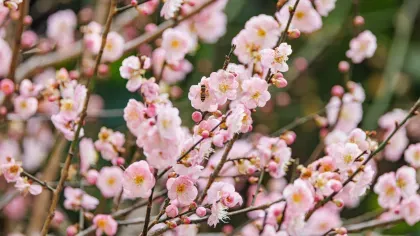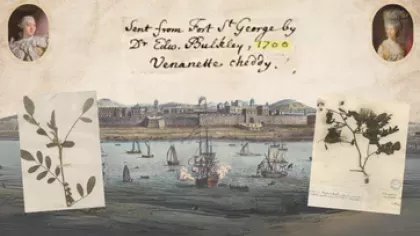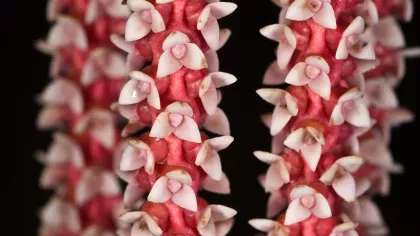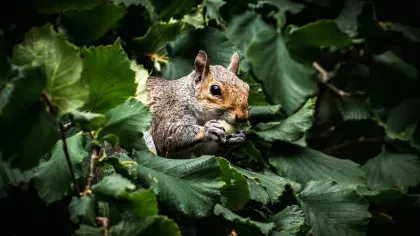24 July 2018
What plant is this? Scan the genomic barcode!
Kew researchers are involved in Plant.ID, a European training network to find better ways to identify plant samples using DNA as a plant’s ‘barcode’.

The history of plant identification
For centuries, plant identification has relied on morphology, the visible characters of a plant. Although this works well if we have the whole plant from root to fruit, we often encounter limited samples, like a single leaf or fragment of bark, or a product made from plants. In these cases, it is impossible to use visible characters to identify the plant but it’s important to do so, especially where we’re concerned about the safe and sustainable use of plants and the trade of rare and threatened species.
A quick and cost-effective solution was found in chemical fingerprinting: distinguishing between similar looking species using their unique chemistry. Unfortunately, this method doesn’t work for all plants. In more recent years, scientists have developed a new method, based on a plant’s set of DNA. Because of the unique genetic makeup of every plant species, DNA sequence information can result in high-quality species identification tools: DNA barcodes. Traditional DNA barcodes are short regions of DNA that sometimes give only limited resolution, but it is now possible to use the whole genome of the plant: the genomic barcode.
The principal of DNA barcodes
DNA barcodes are like the barcodes you find in the supermarket. The characteristic lines of varying thickness are made up, instead, of DNA sequences with varying length and composition. For plant identification, this barcode is determined for many different species to make a reference database. To identify the species of some unknown plant material, DNA is extracted, sequenced and the barcode sequences compared to the reference database to find a match.
In the past, research was limited by the cost of sequencing in both money and time. New techniques, collectively called Next-Generation Sequencing, now allow rapid, high-throughput sequencing that cost-efficiently generates large volumes of data. These technologies are revolutionising identification tools for fragments of plant material, complementing careful morphological and chemical analysis in the laboratory.
How can plant barcoding help?
Barcoding has sweeping implications for international trade and conservation. Many threatened species are legally protected because of unsustainable harvesting, international trade and the likelihood of extinction, but controlling trade is problematic unless the plant material can be identified. Another application is authentication. Companies may inadvertently or purposefully substitute one species for a similar one in their products, which could lack the important properties. This leads to issues with fraud, increased extinction threats and even poisoning.
Both problems are occurring in the genus Aloe. A new research project at Kew led by me and Senior Research Leader Olwen Grace will investigate these issues. We want to find out which species are being traded - and thus need to be monitored for conservation. Working with collaborators at the Natural History Museum of Denmark and the UK National Institute for Biological Standards and Control, DNA sequences will be used to develop a barcode for aloes in trade, and to study their evolution at the same time.
Further reading:
- Misidentifying plant material that is used for commercial products and food can lead to major health and safety problems, as illustrated by this mass intoxication in Greece.
- To get an idea of the impact of ‘succulent poaching’, read this recent article from The Guardian about illegal collecting of Dudleya in California.






